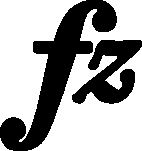



|
b. 177
|
composition: Op. 23, Ballade in G minor
..
On the available photograph of A, it is difficult to evaluate whether the dot visible over the 1st quaver is a staccato mark, an insignificant fleck of ink or the upper end of this note's stem. Therefore, in the main text we confide in the engraver of FE, who did not include this possible mark in the text. In similar contexts, Chopin would use both a version with a dot and a version without it, cf., e.g. b. 68 and 191 of the Ballade. category imprint: Graphic ambiguousness; Differences between sources issues: Errors in FE |
|||||
|
b. 177-178
|
composition: Op. 23, Ballade in G minor
category imprint: Differences between sources issues: Long accents , Inaccuracies in FE |
|||||
|
b. 177
|
composition: Op. 49, Fantaisie in F minor
..
The bottom note of the minim chord in FE1 is provided with a category imprint: Interpretations within context; Differences between sources issues: Errors in FE , FE revisions |
|||||
|
b. 177
|
composition: (Op. 4), Sonata in C minor, Mvt I
..
The staccato marks with which Chopin marked the sequence of thirds in A can be interpreted as dots or wedges. According to us, Chopin wrote dots, which he then turned into wedges, or the other way round – wedges that he tried to replace by dots. Taking into account category imprint: Graphic ambiguousness; Differences between sources; Corrections & alterations issues: Corrections in A , Wedges , Inaccuracies in A |
|||||
|
b. 177
|
composition: (Op. 4), Sonata in C minor, Mvt IV
..
The long accent of A was reproduced in GE as a mark whose range is in between the short and the long one, hence it is unclear whether it should be short or long. However, it is longer than typical short accents, e.g. in bar 153, hence we consider it a long accent. In the remaining editions it was interpreted as a short accent. category imprint: Graphic ambiguousness; Differences between sources issues: Long accents , Inaccuracies in GE |

 (D
(D ). The mistake was rectified in
). The mistake was rectified in  dynamics and the clear wedges over the chords marked with
dynamics and the clear wedges over the chords marked with  and
and  in bar 178, we consider dots to be more likely as the final markings. However, the wedges present in the sources can be considered an equally valid variant.
in bar 178, we consider dots to be more likely as the final markings. However, the wedges present in the sources can be considered an equally valid variant.